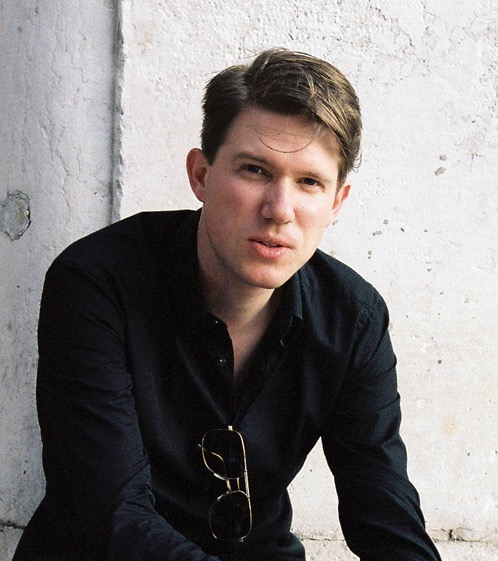LET THERE BE DARK
Rogier van der Heide’s astute views on light

MAXXI in Rome, by Zaha Hadid
Rogier van der Heide is drawn into a spell by light. The Dutch lighting specialist worked as Director at Arup Lighting and Chief Design Officer at Philips Lighting before recently taking over the helm as Chief Design & Marketing Officer at Zumtobel Group in Austria. He has worked closely with acclaimed architects such as Rem Koolhaas, Renzo Piano, Ben van Berkel, and Zaha Hadid – to make light an integral part of their buildings. We spoke with him about cathedrals, chips, and scenography.

Vorarlberg Museum in Bregenz (AT), by Cukrowicz Nachbaur Architekten Light Art Project by Peter Kogler
Rogier van der Heide: Light shapes our perception. It defines the way we see. That is something that really intrigues me. When I change the lighting I see some- thing differently. That is fascinating and quite powerful, especially these days. Light is more than just illumination; more and more, it is becoming information. Companies use light to transport data. It is also used to direct people through spaces. Ben van Berkel once said me: “The most relevant light source is my iPhone, because it gives me all kinds of information, like a window to the world.” And that’s true. But I also like to think about darkness.

Museo Jumex in Mexico City, by David Chipperfield Architects

Koncerthuset in Copenhagen, by Jean Nouvel
RvdH: Because today’s architecture is taking away all the darkness. We have so much glass on the façades. Every interior space is fullyfilit. But the most interesting interiors are not flattered by light, they are revealed out of darkness. Think of cathedrals or buildings like the Pantheon. It is all about darkness. It seems that we have forgotten how intriguing and how visually attractive and intriguing darkness is. Some years ago, I gave a lecture about a topic called darkitecture. This wordplay was intended to suggest that another school of architecture could emerge, one with more respect for darkness. Especially in the lighting industry, as for too long we have seen light as the default solution for everything. It’s not like that. We need darkness for our health and for visual appeal. But much more than this, we need darkness for our imagination.
DAMN°: Can you give us an example of how you would implement darkness?
RvdH: I think that light should be more focused and more precise. For ages we thought that having more illumination in the streets brought safety and comfort. But people don’t mind darkness at all. In the Nether- lands, we turned off all the motorway lights and only left the lights on at junctions. It works very well. The number of accidents has not increased. That’s a good example. But instead of just turning the lights off, we should also think about scenography. At Zumtobel, we put a great portion of our research into the development of control systems that allow the lighting to be orchestrated. In that sense, darkness is not just a way to save energy. For us, it is equally important that the scenography is visually interesting and relevant.
DAMN°: In that sense, time also becomes an integral aspect of illumination, does it not?
RvdH: Time has always been a factor in theatre lighting. And it’s now very much available in architecture – thanks to the digital revolution. Digital music has made everybody a DJ. Digitalisation in lighting will make everybody a lighting designer. This is the most interesting development. Everybody will be empowered to set the lighting level just how he or she likes it. It is our goal as a company to make that possible and to explore creative possibilities. In order to achieve this, the luminaires have to be connected. LED is a semi conductor, a chip – that is what enables us to control it.
DAMN°: How will the field of lighting change with- in the next five years?
RvdH: I think that light sources will become embedded in building materials. In a shop, for example, the lighting can be inside the shelves; you don’t need to suspend it all the way down from the ceiling. In the home, you can also integrate lighting into the furniture. In offices, there will not be a distinction anymore between a ceiling tile or a wall element and a lamp. And in a car, the whole interior can be illuminated. There are so many new ways to use light that have not yet been explored. It is a big shift, so we have to wait to see what happens. But light will also be much more personal and individualised. That’s another big trend.
DAMN°: In many of today’s trendy restaurant and hotel interiors around the world, carbon filament lamps play a key role. What do you think about this sort of nostalgic time-travel back to the 19th century?
RvdH: Carbon filament lamps don’t touch me personally at all. It’s more of a trend than a real development. I am more interested in the lighting effect; the way light is distributed and manifests itself in space. I’m not too much concerned about the look of the luminaire and how it appeals to us during the daytime. Of course, we take great care about its design and every year Zumtobel wins several awards. Which is good – we have to design it carefully. But what really matters is the lighting effect. The application of the equipment. For me, that is the most important thing.
 Antinori Winery in Bargino (IT), by Archea Associati
Antinori Winery in Bargino (IT), by Archea Associati
 Credit Suisse in Zürich, by Stuecheli-Architekten AG
Credit Suisse in Zürich, by Stuecheli-Architekten AG



